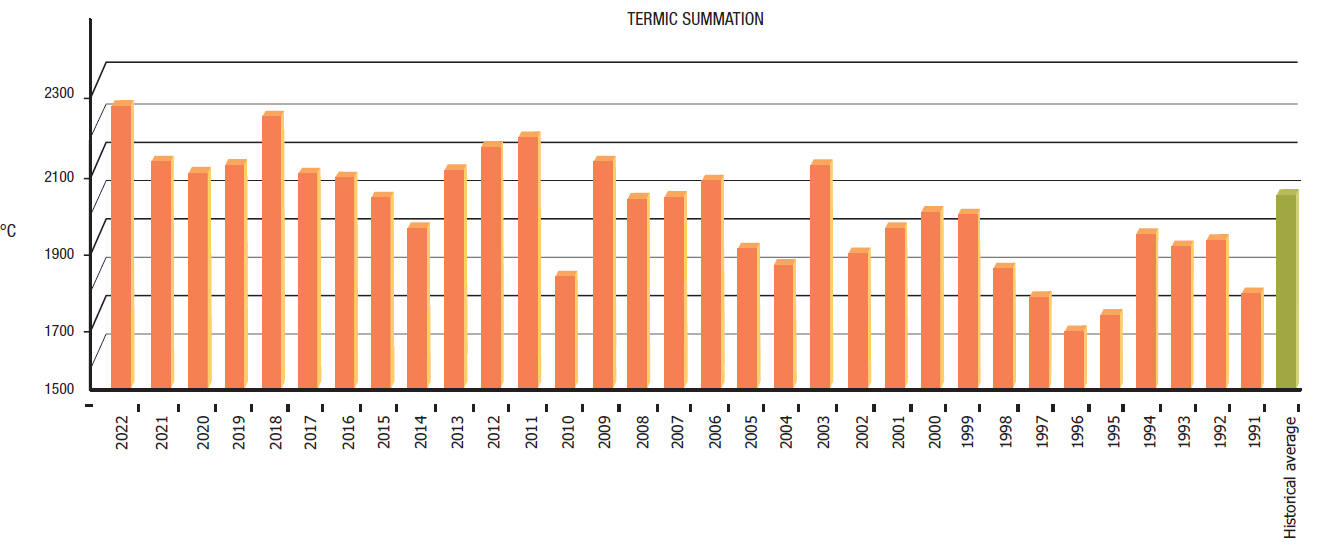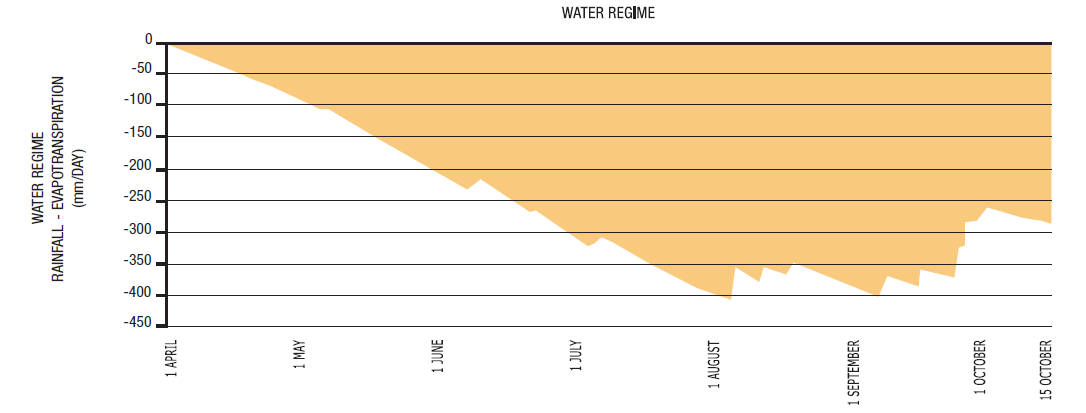VINTAGES
VINTAGE 2022
2022 GROWING YEAR
The 2022 growing year brought hot, dry weather
overall, so we can categorise it as one of our Mediterranean-style vintages. It
will be remembered as an easy viticultural season to manage, in particular for the
quality and health of the fruit, but the lack of rain provided a challenge,
particularly in the early months, as did reduced groundwater reserves.
WEATHER CONDITIONS
The growing season started with about a 5-day delay in budbreak, due to low temperatures in March-early April. Once budbreak began, however, in mid-April, favourable weather set in, which significantly accelerated vine growth. This felicitous situation led to a flowering that was early by some five days, and it concluded rapidly as well, in only seven days, which meant that this phase completed within just a few days in both early-ripening and late-ripening varieties, followed by excellent fruit-set. This dynamic development had the advantage of precluding a multi-stage fruit-set that usually results in berries and clusters showing different stages of ripeness. May, June, and July were hotter than anyone could remember, while some rainfall in August and September lowered temperatures, but October ushered in another hot period. The early-ripeners, Pinot Grigio and Sauvignon Blanc, began veraison in the final third of July, some 10 days earlier than the historical norm. Harvesting kicked off on 26 August, not as early as expected, due to cooling caused by several spells of rain in August and September.
Water scarcity as a major characteristic of the season appeared already in winter, with severely limited rainfall and therefore diminished groundwater reserves. Dry conditions continued into spring and part of the summer, substantially affecting cluster morphology: the exceptional fruit-set resulted in a larger number of berries per cluster, but smaller in size and weight. The prolonged water stress was mitigated by several applications of precision micro-irrigation, utilising the drip irrigation systems installed in the estate vineyards.
The overall seasonal weather was unfavourable to fungal attacks, considerably reducing the need for anti-fungal treatments, with the sole exception of a growing spread of Flavescenza dorata, against which there is still no really effective protection
We will remember 2022 as a fairly early season, like a large number of others over the last 15 years. Overall, the fruit displayed excellent sugar concentrations, along with well-balanced acidities, while pH rose slightly over the preceding year, due to a higher salification resulting from greater availability of potassium in the soil. Growing seasons similar to 2022 were 2018 and 2008.






